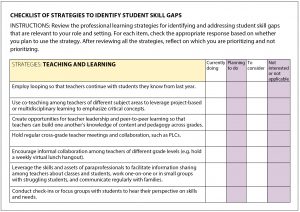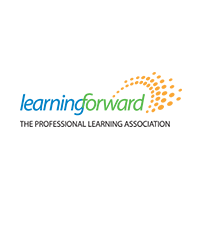TOOLS
Assess and address gaps in student learning
By Learning Forward
Categories: Change management, Implementation, Online learningAugust 2020
Vol. 41, No. 4
As the new school year starts, one of educators’ many challenges is assessing where students’ skills stand and filling the gaps. Students may be behind where they would typically be at the beginning of their grade level as a result of missing out on instruction last spring.

With the unplanned transition to distance learning, many teachers focused on reviewing content and maintaining students’ current skill levels rather than attempting to teach new content. That choice was driven by concerns about leaving behind students without internet access, teachers’ lack of training in how to engage students online, and the urgency of tending to students’ nutritional, safety, and social and emotional needs.
Even when teachers did teach new content, students may have experienced stress and trauma that hindered their learning, struggled to adjust to online teaching, and experienced varying levels of family support for learning.
On top of those challenges, it was difficult to assess how much students were learning in the spring. Many typical methods of checking for understanding were impossible without in-person interactions, and formal assessment would have been stressful for, and perhaps unfair to, students.
When you add in all the uncertainty about what school will look like this year, it’s clear that it will take creativity and collaboration to ensure students don’t manifest skill gaps that carry forward for months or years. Educators at all levels and in all roles should be part of the solution, and cross-grade collaboration will be essential.
Use this tool to consider and plan strategies to create continuity of content and assess and address students’ skill gaps. Click here to download the pdf.
Use this tool to consider and plan strategies to create continuity of content and assess and address students’ skill gaps. Share on X

Learning Forward is the only professional association devoted exclusively to those who work in educator professional development. We help our members plan, implement, and measure high-quality professional learning so they can achieve success with their systems, schools, and students.
Categories: Change management, Implementation, Online learning
Recent Issues
BUILDING BRIDGES
December 2024
Students benefit when educators bridge the continuum of professional...
CURRICULUM-BASED PROFESSIONAL LEARNING
October 2024
High-quality curriculum requires skilled educators to put it into...
LEARNING TO PIVOT
August 2024
Sometimes new information and situations call for major change. This issue...
GLOBAL PERSPECTIVES
June 2024
What does professional learning look like around the world? This issue...












